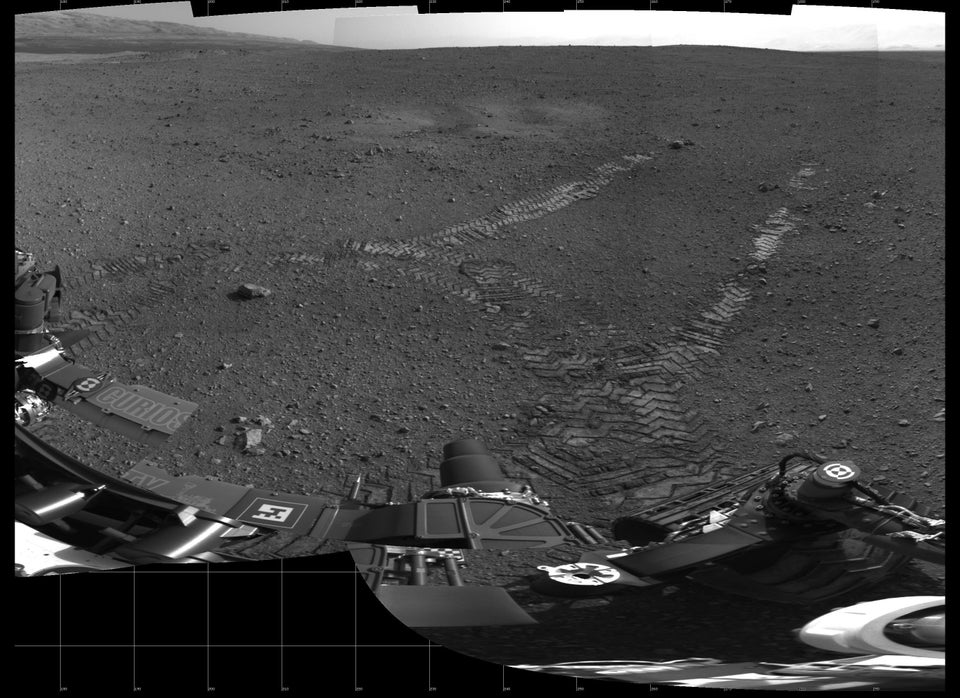
It's a question that's vexed casual observers, Mars lovers, even curious Redditors and computer engineers: What the heck are those circular markings all over the Curiosity rover? Tattoos?
It's actually less of a mystery than it seems, Chris Leger of JPL, one of the rover's drivers, told The Huffington Post. Leger said the markings are "fiducial marks," or "fiducials" for short.
"They're all so the rover can measure itself," he explained.
The circular markings are a staple of engineering that can serve two parallel purposes, Leger said: to calibrate cameras and to calibrate various mechanisms on the rover. They're a common feature in high-tech photography and robotics here on Earth, but the use of fiducials on extraterrestrial robots is relatively new. The technique started informally on the Mars Exploration Rover mission, which landed Spirit and Opportunity on the Red Planet's surface in 2004.
"We noticed that, over time, the accuracy of our robotic arm was degrading, and we weren't really sure why," Leger said of the previous mission. "So some of the engineers came up with an algorithm that would just recognize a circular feature on the end of the arm. And every day, it could track where that actually was versus where the robot thought it was."
The idea blossomed into more than just an engineering hack with Curiosity.
"I talked to the engineers who specialize in computer vision, and we came up with the design for the fiducials [on Curiosity]," Leger said. "We wanted something that would be easy for either a computer program or a person to accurately pick the center of. Having that intersection in the middle makes it easier for a person -- they can zoom in on the image and click exactly on that intersection -- and [the design] also makes it easy for a computer, because it can compute the center of a circle."
From there, basic trigonometry lets engineers piece together the positions and orientations of the various parts of the car-sized machine.
"We wanted to be able to measure all of the mechanisms on the rover," Leger said. So fiducials are plastered "all over the turret" on the end of Curiosity's arm, as well as on the tops of the steering actuators and on the top deck of the rover.
While there's no catchy nickname yet for the fiducials -- on a mission that's so far coined colorful terms like Bradbury Landing, Gale Crater and Yellowknife Quadrangle -- they do bear a slight resemblance to a certain terrestrial car marque.
"One of the engineers said they look a lot like the BMW logo," Leger said. "Maybe they'll be flattered that the most expensive vehicle in the world has that logo all over it."

